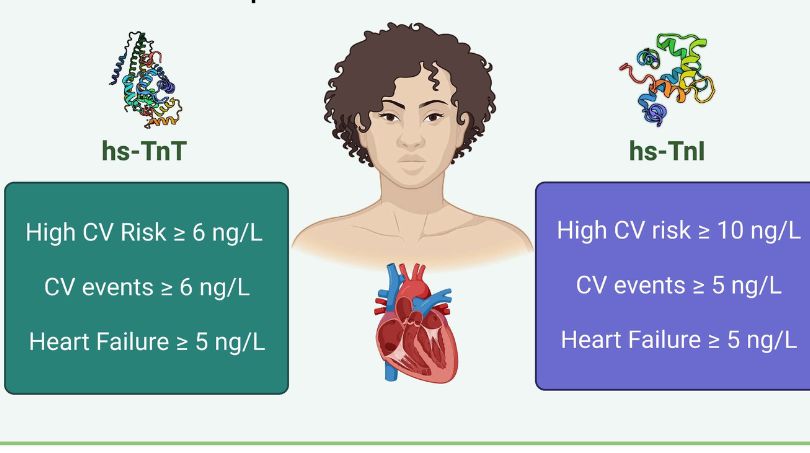The troponin test is a blood test used to measure the levels of troponin proteins in the bloodstream. Troponin is a group of proteins found in cardiac and skeletal muscles, with cardiac troponin being specific to the heart. The test is primarily used to diagnose and assess heart conditions, particularly heart attack.
During a heart attack, the heart muscle is deprived of oxygen, leading to damage and the release of troponin into the bloodstream. The troponin test detects these elevated levels of troponin, indicating heart muscle injury. It is considered the gold standard for diagnosing heart attacks because it is highly sensitive and specific.
In addition to diagnosing heart attacks, the troponin test is also used to monitor patients with known heart conditions, evaluate chest pain, and assess the effectiveness of treatments. It is a valuable tool in guiding medical decisions, such as determining the need for interventions like angioplasty or clot-dissolving medications
Consider reading: Double Marker Test
About Test
About Troponin Test
When & Why
When & Why
The troponin test is used in various clinical scenarios to diagnose and monitor heart conditions, primarily acute myocardial infarction (AMI) or heart attack.
Here are some situations when and why the troponin test is commonly used:
- Suspected heart attack: When a patient arrives at the emergency department with symptoms suggestive of a heart attack, such as chest pain or discomfort, shortness of breath, or radiating pain in the arms, the troponin test is often performed. Elevated levels of troponin in the blood indicate heart muscle damage and help confirm the diagnosis of AMI.
- Evaluation of chest pain: Chest pain can have various causes, including heart-related issues like chest pain due to reduced blood flow to the heart. The troponin test is used to assess if the chest pain is due to a heart attack or another cause.
- Monitoring heart conditions: Patients with known heart conditions, such as chronic heart failure or unstable angina, may undergo regular troponin testing to monitor their cardiac health. Changes in troponin levels can indicate worsening of heart function, the occurrence of a heart attack, or the need for adjustments in treatment plans.
- Assessing treatment effectiveness: Troponin levels can be used to evaluate the effectiveness of interventions or treatments in patients with heart conditions. For example, after a heart attack, a declining trend in troponin levels over time suggests successful therapy and reduced cardiac damage.
Test Procedure
Test Procedure
The troponin test is typically performed in emergency departments and cardiac care units when a heart attack is suspected. It involves drawing a blood sample from a vein in the arm and sending it to a laboratory for analysis. The results are usually available within a few hours.
Here are few steps that are carried out by the department to conduct the test:
- Patient preparation: The patient may be asked to refrain from eating or drinking for a certain period of time before the test, usually around 6-12 hours. This helps ensure accurate results.
- Blood sample collection: A healthcare professional will use a needle to draw blood from a vein, usually from the arm. They will clean the site with an antiseptic and may apply a tourniquet to make the veins more visible and accessible. The blood is collected in a tube or vial.

- Sample handling: Once the blood sample is collected, it is labeled with the patient’s identification information and any other necessary details. The tube or vial is carefully handled to prevent contamination or damage.
- Laboratory analysis: The blood sample is sent to a laboratory for analysis. In the lab, the troponin levels are measured using specific assays designed to detect troponin proteins. There are different types of troponin tests, such as troponin I (TnI) and troponin T (TnT), which have slight variations in their methods.
- Results: The laboratory sends the test results to the healthcare provider who ordered the test. The healthcare provider then interprets the results in the context of the patient’s clinical history, symptoms, and other diagnostic information.
Note: It’s important to note that specific protocols may vary slightly depending on the healthcare facility and laboratory practices. Additionally, it is crucial to follow proper safety and hygiene procedures during blood sample collection to minimize the risk of infection or other complications.
Normal Range
Normal Range
The normal range of troponin levels can vary slightly depending on the specific method used by the laboratory conducting the test.
Troponin levels are typically reported as either troponin I (TnI) or troponin T (TnT). Here are the approximate normal reference ranges for troponin levels:
- Troponin I (TnI):
- Normal range: Less than 0.04 ng/mL (or less than 40 pg/mL)
- Troponin T (TnT):
- Normal range: Less than 0.01 ng/mL (or less than 10 pg/mL)
Note: Reference ranges may differ for specific populations, such as children, older adults, or individuals with certain medical conditions.
Results & Reports
Results & Reports
Elevated troponin levels above the normal range can indicate heart muscle damage or a heart attack, while levels within the normal range do not necessarily rule out heart-related issues, as some conditions may still be present.
Troponin test reports may also include additional details, such as:
- Unit of measurements: Troponin levels are typically reported in nanograms per milliliter (ng/mL) or picograms per milliliter (pg/mL), but the specific units used may vary depending on the laboratory.
- Serial measurements: In some cases, multiple troponin measurements may be taken over a period of time, often several hours apart, to assess the trend in troponin levels. This serial monitoring helps evaluate changes in troponin levels and provides valuable information on the progression of a heart attack or response to treatment.
- Clinical comments: The report may include interpretations or clinical comments from the laboratory or the healthcare provider who ordered the test. These comments help contextualize the troponin results based on the individual’s clinical history, symptoms, and other diagnostic findings.
Note: It’s important to remember that the interpretation of troponin test results should be done by a qualified healthcare professional who can take into account the specific clinical context and other relevant factors. They will provide a comprehensive assessment and guide appropriate medical management based on the troponin levels and the individual’s overall condition.
How To Book
How To Book
To book a Troponin test, you can look for a laboratory nearby your house or can directly consult your healthcare provider. You can also check the availability of hospitals and laboratories online and schedule an appointment accordingly. Some facilities also offer walk-in services, but it’s generally recommended to schedule an appointment to minimize wait times.